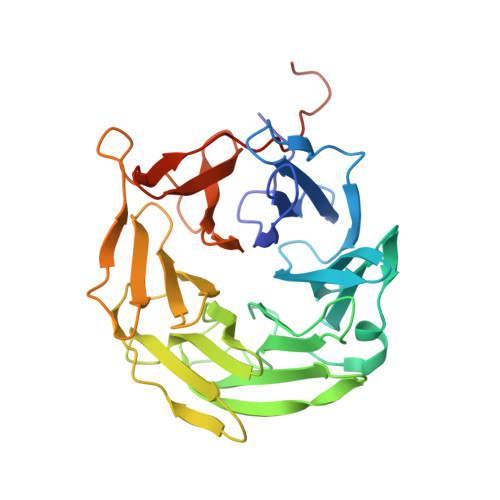Influence of Trp flipping on carbohydrate binding in lectins. An example on Aleuria aurantia lectin AAL.
Houser, J., Kozmon, S., Mishra, D., Mishra, S.K., Romano, P.R., Wimmerova, M., Koca, J.(2017) PLoS One 12: e0189375-e0189375
- PubMed: 29232414
- DOI: https://doi.org/10.1371/journal.pone.0189375
- Primary Citation of Related Structures:
5MXC - PubMed Abstract:
Protein-carbohydrate interactions are very often mediated by the stacking CH-π interactions involving the side chains of aromatic amino acids such as tryptophan (Trp), tyrosine (Tyr) or phenylalanine (Phe). Especially suitable for stacking is the Trp residue. Analysis of the PDB database shows Trp stacking for 265 carbohydrate or carbohydrate like ligands in 5 208 Trp containing motives. An appropriate model system to study such an interaction is the AAL lectin family where the stacking interactions play a crucial role and are thought to be a driving force for carbohydrate binding. In this study we present data showing a novel finding in the stacking interaction of the AAL Trp side chain with the carbohydrate. High resolution X-ray structure of the AAL lectin from Aleuria aurantia with α-methyl-l-fucoside ligand shows two possible Trp side chain conformations with the same occupation in electron density. The in silico data shows that the conformation of the Trp side chain does not influence the interaction energy despite the fact that each conformation creates interactions with different carbohydrate CH groups. Moreover, the PDB data search shows that the conformations are almost equally distributed across all Trp-carbohydrate complexes, which would suggest no substantial preference for one conformation over another.
Organizational Affiliation:
CEITEC MU - Central European Institute of Technology, Masaryk University, Brno, Czech Republic.




















